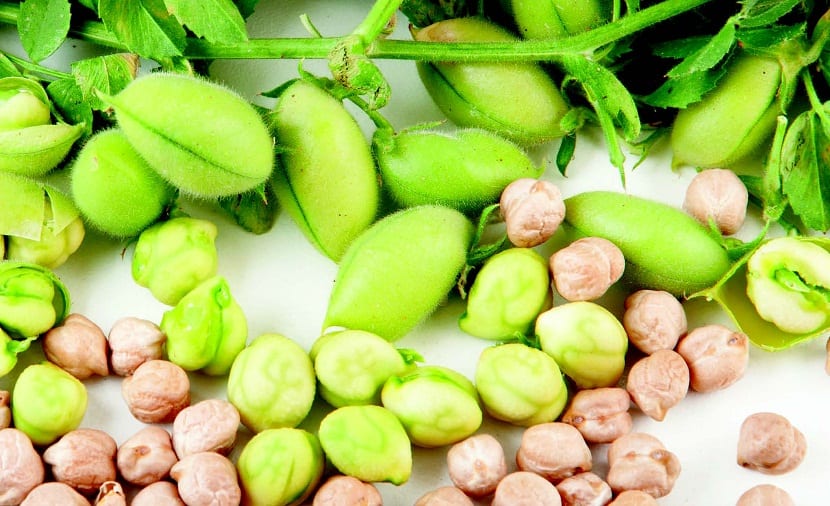
Today we are going to talk in depth about chickpea. It is a legume widely consumed throughout the world for its excellent nutritional characteristics. It belongs to the legume family and its scientific name is Lentil. They are capable of living in symbiosis with bacteria of the genus Rhizobium sp.. These are microorganisms that are capable of fixing the nitrogen present in the atmosphere in the plant and the soil.
Do you want to know everything about chickpea in depth? If you want to learn how to grow it, keep reading 🙂
Key features
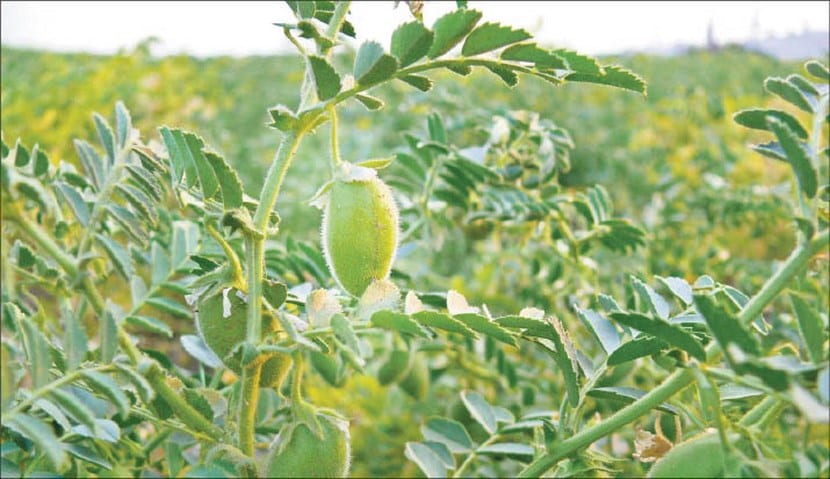
Chickpea has been well known throughout history. Today it has been proven that it is the legume with the least capacity to fix nitrogen of all. Compared to lentils or beans, it is capable of fixing half. In addition to having this lower capacity, it is very sensitive to a disease called rabies (dvdimella robiei). This disease occurs in winter. In order not to affect the plant, the farmers delayed planting the chickpea for as long as possible. Therefore, the symbiotic bacteria barely had time to develop and fulfill their function.
Its roots are quite deep and it has the branched and hairy stems. The main stem is rounded and has numerous excretory glands. As for frogs, they begin to be produced at a fairly early stage of development. Primary branches are more productive than secondary branches that are formed through a sub-node.
The leaves can be both paripinnate and odd-pinnate and their flowers are solitary.
Due to the symbiont relationship that makes nitrogen fixation difficult, the sowing date should be increased. By delaying it completely, a more efficient harvest can be achieved and we will avoid the appearance of crop diseases.
It has been found that soil fertility and the amount of assimilable potassium they are conditional factors in chickpea production. In dry springs a lower quality chickpea is produced. If the sowing density is increased, the quality of the seed decreases.
Next we are going to analyze their cultivation work.
Chickpea cultivation work
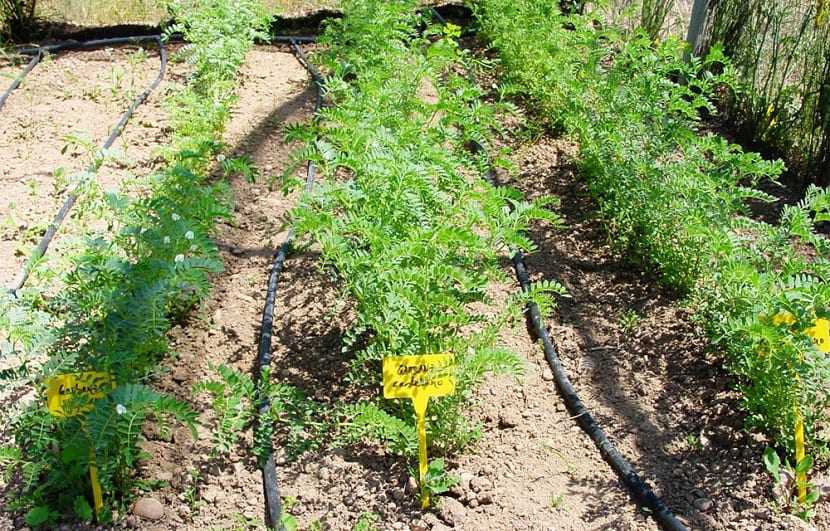
Chickpea is grown after some cereal. Therefore, it is carried out a rise from the ground of about 20-30 centimeters, as usual. The soil should be fairly loose without lumps forming.
One mistake the farmer makes is doing more work than necessary. This leads to negative effects on the crop. For now, increases the cost of diesel due to the greater use of the tractor. The most important negative effect is that a fine layer of fine earth, with a dust texture, is formed by the destruction of the aggregates. These aggregates are structures that have required many years for their formation.
It is advisable to pass a barbed harrow or some material that allows the floor to be completely smooth. It is advisable that the terrain is completely flat, without clods or ridges. This greatly facilitates the rest of the work and helps with the application and effectiveness of the herbicide.
What compost do you need?
In the fifties 300-400 kg / ha of complex compost from 9-18-27 was used. After years of research on chickpea crops, it has been concluded that there are no differences. In other words, the same productivity can be obtained in a paid plot as in another that is not.
In those crops in which the stubble of the previous crop is buried, it may happen that the soil microorganisms, stimulated by this extra contribution of organic matter, multiply and compete for the existing nitrogen with the plants. The newly germinated chickpea is not capable of offering much competition when it comes to fixing nitrogen. This phenomenon is added to the fact that bacteria Rhizobium sp. they are parasites during the plant incorporation phase.
For these reasons, farmers distribute a concentration of nitrogen fertilizer throughout the field. It is advisable about 20-30kg per hectare. With the application of these basic nutrients, production is increased and profitability is increased. This subscriber has been done in a traditional way.
Care and requirements
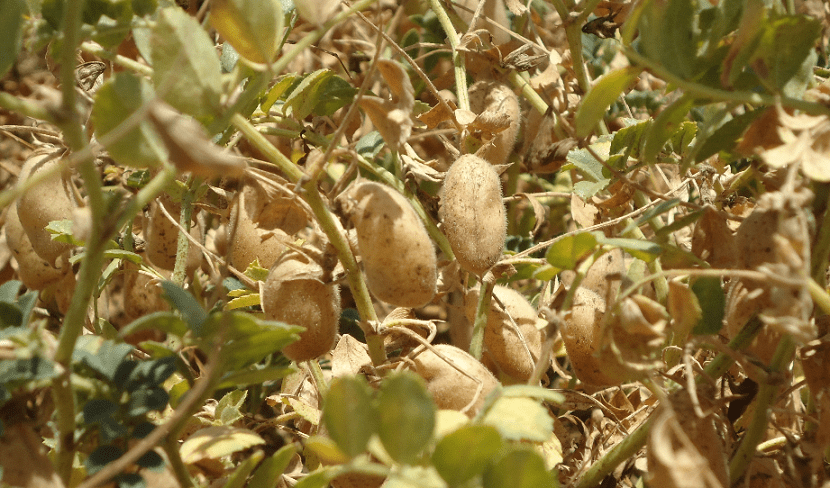
Chickpea is quite resistant to drought. However, it needs enough moisture for the seed to germinate. Normally they use the water accumulated in the land from the rains to begin to germinate. However, if extra watering is done, you will appreciate it.
Generally, watering improves yield and number of pods, so you will have more fruit. The optimal chickpea temperature is in a range between 25 and 35 degrees. Although it is capable of germinating at 10 degrees, it will do so much slower.
Regarding the type of soil, it is advisable to sow it in siliceous soils with a clay or silty-clay texture. It is good that the floor does not have plaster. If there is an excess of clay, it can produce a kind of roughness in the skin of the seed. If the land where it has been planted contains gypsum, we will obtain chickpeas of poor quality in general. These will not be suitable for the kitchen and will be very bad to cook. On the other hand, if the soil has undecomposed organic matter, it will negatively affect the chickpea.
The kindest years for the chickpea coincide with the rainiest. If those rains are concentrated in spring, much better. Soils that are deeply tilled are better for them, since their root system is more developed and resistant to drought.
It is advisable not to repeat its cultivation on the same land until four years have passed. The lands that are oriented to the south and west are the most advisable. Although they need moisture to grow, it is not good for it to be stored. It is very sensitive to salinity, so you have to be careful with the soil and irrigation water. Airier soils are better.
As for the pH, the ideal is between 6 and 9. It has been shown that the more acidic the soil, the more bacteria problems they have.
Plagues and diseases
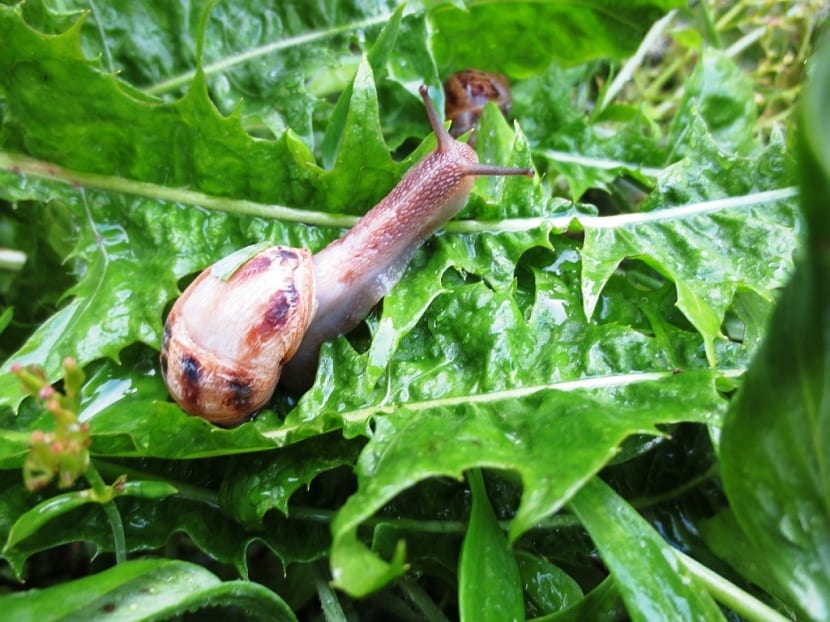
The pest to which the chickpea is subject is to the snail. Although there are no methods to get rid of it (and less if it is still), it does not harm the plant. So far, the best snail control is using baits with metaldehyde as an active ingredient, as long as this pest is active and the baits are ingested.
Another pest is horn bugs (Dichelops furcatus). This pest does not affect chickpeas either, they only take refuge in the pods. Insecticides can be effective on them.
The diseases are related are the symbiotic bacteria.
As you can see, the chickpea is quite sensitive and you have to be very attentive to its care to obtain good quality fruits.